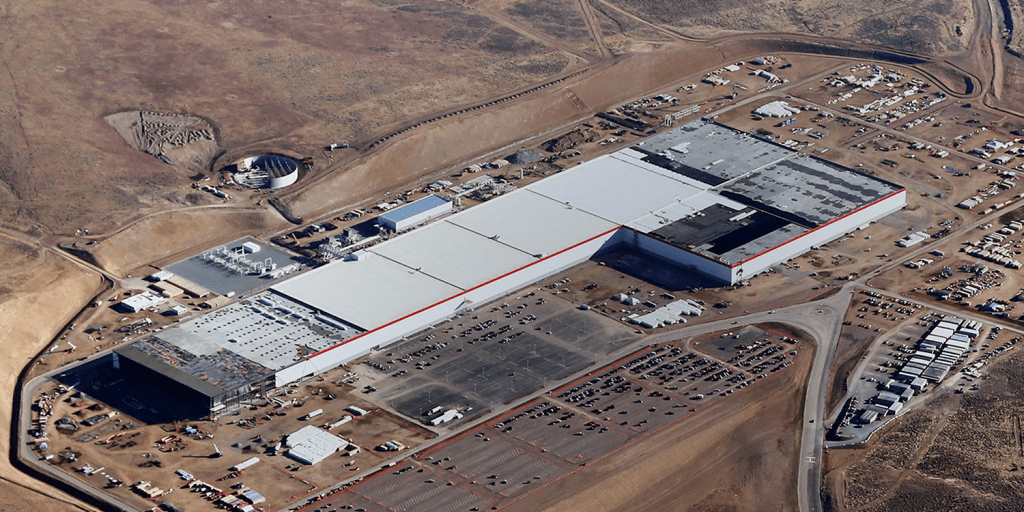Tesla & Panasonic battery cell factory profitable
Tesla and Panasonic’s Gigafactory 1 in Nevada was profitable in Q1/2020, the CFO of Panasonic stated in the announcement of the current business figures. The plant, which the partners had begun building in 2014, was in the black for the second consecutive quarter.
Tesla as an electric carmaker had recently posted a profit for the third consecutive quarter. Meanwhile, first battery partner Panasonic has indicated that talks are underway with Tesla to expand production capacity at the Giga Nevada plant beyond the existing 35 GWh of battery cells per year. There is strong demand from Tesla that exceeds the factory’s current capacity, said Panasonic CFO Hirokazu Umeda at the meeting.
Panasonic and Tesla would be “working to improve materials and technologies throughout this financial year,” Umeda continued. This sounds like a new generation of batteries that both partners are aiming for. At the same time, they recently abandoned the idea of building a joint battery plant in China. According to Umeda, the Tesla plant in Shanghai will be supplied with batteries from the USA. One must add an “as well” here though as Tesla has scored partners from China as well as they expect demand to increase. Also, Panasonic has decided to stop solar cell production in Gigafactory 2 in New York this year. But this is only a side issue.
For the partnership between Panasonic and Tesla, the past few months have been unstable: Panasonic recently lost its status as Tesla’s exclusive battery supplier. The Californians have entered into partnerships with LG Chem and CATL to supply them with cells in China as mentioned. Nevertheless, Gigafactory 1 has succeeded in making a profit – thanks in particular to the substantial increase in demand for Tesla cars. For the Japanese, this means that their investment of 1.6 billion dollars in the Nevada plant is finally yielding profits. Years of losses were the main reason why Panasonic has always been reluctant to expand its partnership with Tesla.
Another reason, of course, is that Tesla has recently aired plans to mass-produce its battery cells, again most likely with partners from China, namely CATL. Tesla’s project Roadrunner aims to reduce costs to $100 per kilowatt-hour. According to the latest report, this new battery technology is to be introduced at the beginning of 2021 at the latest. Tesla is aiming for an even larger scale of production than the Gigafactories and speaks of terra measures. Details have not been provided, and Elon Musk just postponed the Tesla Battery Day set this May to an undisclosed future date.
Meanwhile, it is foreseeable that the Nevada plant will fall back into the red in the second quarter. At the end of March, the plant was shut down due to the COVID-19 crisis. Panasonic withdrew its 3,500 employees working there, and it is unclear when they will return to work. Only Tesla recently have resumed production at their Fremont facility.
Additional reporting by Nora Manthey.





0 Comments